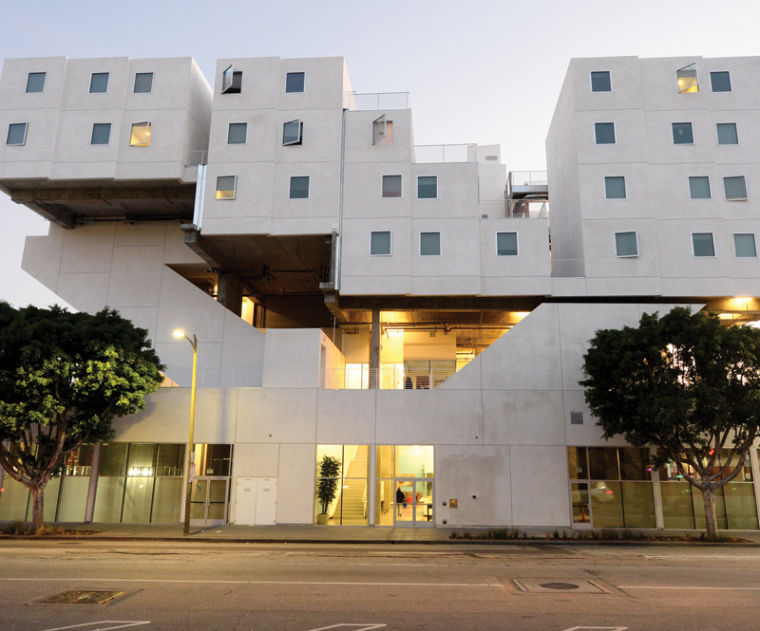When I first moved to San Francisco from the UK, one of the most marked differences I noticed in city life was the sheer volume of mentally-ill homeless people living on the streets. Little did I know at the time, but Los Angeles would make San Francisco’s issues seem minor. In the four years I have lived here in LA, and through the many times I have been asked if I like it, I’ve mentioned this frankly-disturbing facet of the city to anyone who would listen. Some people respond as though the homeless are props that provide the “gritty” backdrop they desire from their urban lifestyle, while others are shocked to know the extent of the problem, apparently having little contact with the homeless on a day-to-day basis.
I sometimes speculate that the mental health of the homeless might be more central to my thoughts purely because I don’t drive. I walk and use public transport (or the mobile homeless shelters/hospitals that the buses become after about 7pm), rather than swish by the less-pretty areas of town on route to my destination. I wonder if I would have a very different view of Los Angeles if I saw it mostly as a blue sky-palm trees blur from the seat of my car, rather than slowly and in detail as I carefully plot my way around the sleeping and raving homeless people on the sidewalk. It’s the only city I have ever lived in where many people refuse to even give the buses a try, and it’s hard to blame them. If you come to LA with big dreams, as most do, taking the bus is the quickest way to get a reality check.
One statistic I seem to always end up discussing at parties (yes, I’m that kind of party guest) is from this year’s Los Angeles 2020 Commission report — four out of ten people in LA live, the report states, in “what can only be called misery.” 40% of families are earning poverty wages or are unemployed. The homeless are the visible overflow, a marker of rising inequality that permeates the population.
There are 40,000 homeless on the streets, some 4,000 living in downtown alone, and, of those, approximately one-third will have serious mental health issues. Los Angeles is, in fact, the capital for homelessness in the country. How did they get there? We have Ronald Reagan to thank, who released half of all mentally-ill patients from care during his stint as California Governor and then withdrew federal funding from mental health centers during his presidency.
The Obama administration is trying to turn this around, and the new Star apartments on Skid Row in downtown LA are a part of the plan. 102 units of supportive housing were prefabricated and shipped in to the city to be placed on top of pre-existing buildings. They will provide shelter and care for some of the most seriously-unwell homeless people in the area. The project includes facilities for case management and counseling as well as a community garden, classes and a gym. The aim is to assist those most likely to end up in hospital or jail on-and-off their whole lives. Residents pay 30% of their income for rent, or nothing at all if they have no income.
The Restored Rossyln Hotel down the street from the Star also opened last month for 75 homeless war veterans. Los Angeles has some 6,000 homeless vets on its streets — the most of any city in the country. President Obama is keen to end this particularly unjust situation during his presidency.
Skid Row originally acted as the city’s dumping ground – a convenient place where the homeless were out of sight and out of mind. But Downtown has flourished in recent years with art galleries, hotels and restaurants, becoming a walk-able mini-Manhattan, all of which has made it hard for the homeless to be ignored. Although gentrification has increased support for those seeking to provide care for the homeless – such as United Way LA (their fundraiser 5k walk/run is next month) – the rising rents and decreasing availability of suitable locations has made their work harder.
Elsewhere, efforts to criminalize homelessness are stepping up with cities passing ordinances to prevent the homeless from sleeping in public or transporting their belongings on the streets. The documentary ‘Lost Angels: Skid Row is My Home’ (available on Netflix) shows Los Angeles police confiscating the tents, blankets and personal items of the homeless camped on Skid Row as part of the Safer City anti-crime initiative, an illogical effort to make homelessness disappear by making their lives yet more difficult. Giving the homeless homes and then supporting their progress from that point is the only proven effective way to alleviate a city’s homelessness problem. The homeless housing projects are presented as the most cost-effective solution to a costly problem. Poverty is expensive, apparently.
Los Angeles is now on a progressive path when it comes to helping the most severe casualties of systemic inequality, and clearly that’s something to be celebrated. However, what of the four out of ten Angelenos living in “misery?” Those people who have a home, but can barely keep it living on the wages of three jobs (if they’re lucky enough to find three jobs). To paraphrase a well-worn saying, “A society is judged on how it treats its most vulnerable members,” but what about the four in ten families living on poverty wages? They might not be the “most” vulnerable, but they’re not secure. Their mental health issues – the depression and anxiety of living on the line – may not be the raving kind, but they’re surely there.
Los Angeles is home to 28 billionaires with a net worth of $81.6 billion. Los Angeles also has 40% of its residents struggling to get together the basics of food and shelter, with little hope for anything better. This is what the successfully-supported homeless have to look forward to without a system overhaul that might take thinking that’s even more radical than giving the homeless homes.




-300x169.jpg)












